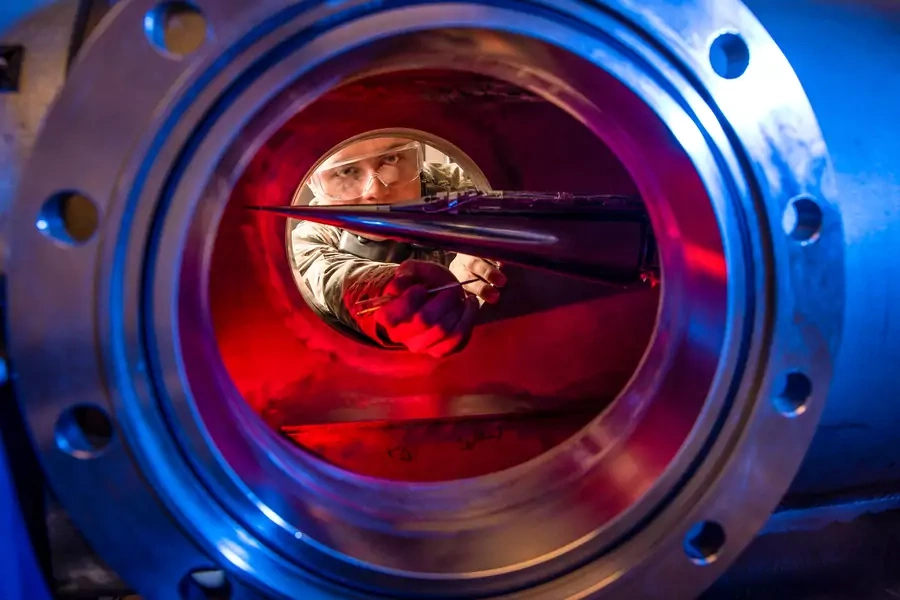Keeping Our Edge: Attracting and Educating a Science and Technology Workforce

This post is based on some of the findings of the CFR-sponsored task force, Innovation and National Security: Keeping Our Edge, which was released September 18, 2019.
The United States’ ability to develop scientists at home and attract the best and brightest from around the world has provided a competitive edge for most of the last half century. This edge is now at risk. While there is an increasing percentage of college graduates in STEM fields, significant shortfalls remain in specific sectors critical to national security, such as cybersecurity, mechanical engineering, systems engineering, and aerospace engineering. Equally alarming is that the proportion of foreign students studying STEM subjects in the United States, which doubled over the past thirty years, is declining, and the United States is less able to attract highly educated immigrants. The decline in domestic STEM talent in critical fields and barriers to talented foreign students’ and workers’ coming to and remaining in the United States will have long-term negative economic and national security consequences.
More on:
The pressure of the U.S. talent pipeline is heightened by the rapid increase in China’s STEM workforce. The number of science and engineering bachelor’s degrees conferred in China increased from 359,000 in 2000 to 1.65 million in 2014. Questions have been raised about the quality of some Chinese programs, but there is no doubt that the Chinese ability to compete in STEM fields has grown. In addition, with ambitious science projects, generous salaries, and high levels of lab funding, China has made a concerted effort to recruit top foreign talent. The Department of Energy recently warned that talent programs were offering scientists at U.S. national labs hundreds of thousands, and in some cases millions, of dollars to conduct research in China. This increase in spending and STEM personnel is beginning to pay off in Chinese scientific accomplishments.
Figure 1. U.S. and Chinese STEM Graduates
First university degree in STEM in selected countries
To bolster the future of the United States’ science and technology workforce, the White House, Congress, and academia should develop a twenty-first-century National Defense Education Act, with the goal of expanding the pipeline of talent in math, engineering, and the sciences. The original Eisenhower administration effort broadened the talent pipeline through scholarships and low interest loans, and a twenty-first-century NDEA would support up to twenty-five thousand competitive STEM undergraduate scholarships and up to five thousand graduate fellowships.
The United States is not fully utilizing American talent. Minorities and women are currently underrepresented in STEM fields. Only 2.2 percent of Latinos, 2.7 percent of African Americans, and 3.3 percent of American Indians and Alaska Natives hold a university degree in STEM fields. Women constitute 47 percent of the overall workforce but only 28 percent of the science and engineering workforce, and women in tech jobs leave the field at a rate 45 percent higher than men. Universities, federal and state governments, and businesses should also work to increase the representation of women and minorities in STEM fields by providing financial support, mentoring, research experience, and academic and career advising to minorities in STEM fields. Effective strategies to promote inclusion of women in universities include on-campus childcare centers, equal opportunities to lead committees and research groups, and pauses in the tenure clock for up to one year for raising children. Within the workplace, flexible, collaborative environments that offer leadership development, mentoring, and networking for women are linked to higher rates of retention.
More on:
Given the important role that foreigners have played in U.S. innovation, the United States should make it easier for foreign graduates of U.S. universities in scientific and technical fields to remain and work in the country. Congress should “staple to a green card to an advanced diploma,” granting lawful permanent residence to those who earn a STEM master’s degree or doctorate. Congress should also pass legislation permitting immigrants to live and work in the United States if they can raise funds to start new companies. The Startup Act, which has bipartisan support, would create an entrepreneurial visa to permit seventy-five thousand immigrants annually to remain temporarily in the country if they have raised enough capital to launch a new company, and to remain permanently if the company succeeds. Congress should also pass the DREAM Act.
Beijing has often exploited the openness of the American system to steal valuable scientific knowledge from American universities, and the federal government should make targeted efforts to prevent it. The most effective measures to stop theft will likely be tighter controls over technology in universities and research labs, accompanied by expanded counterespionage efforts and greater enforcement by universities of existing rules on disclosure of foreign funding and limits on the transfer of research findings and intellectual property.
The nations with the best talent will push to the farthest edges of the science and technology frontier, and the United States cannot stand still as others devote new resources to developing human capital. Government, universities, and the private sector need to cooperate to expand the STEM pipeline and support new pathways into technology and science careers.
 Online Store
Online Store
